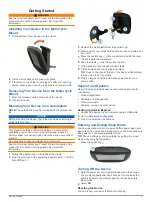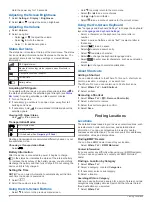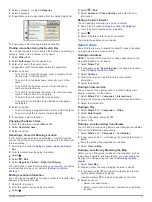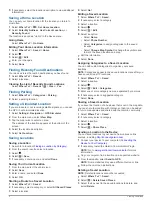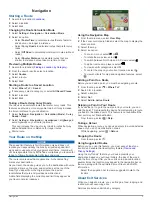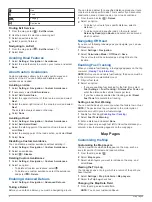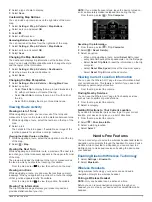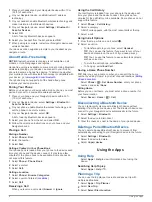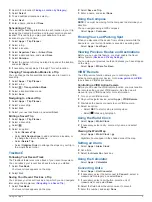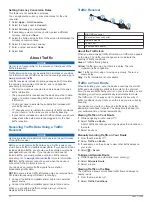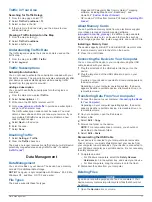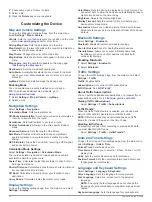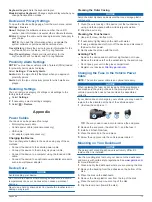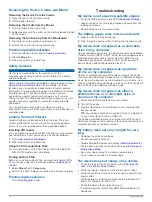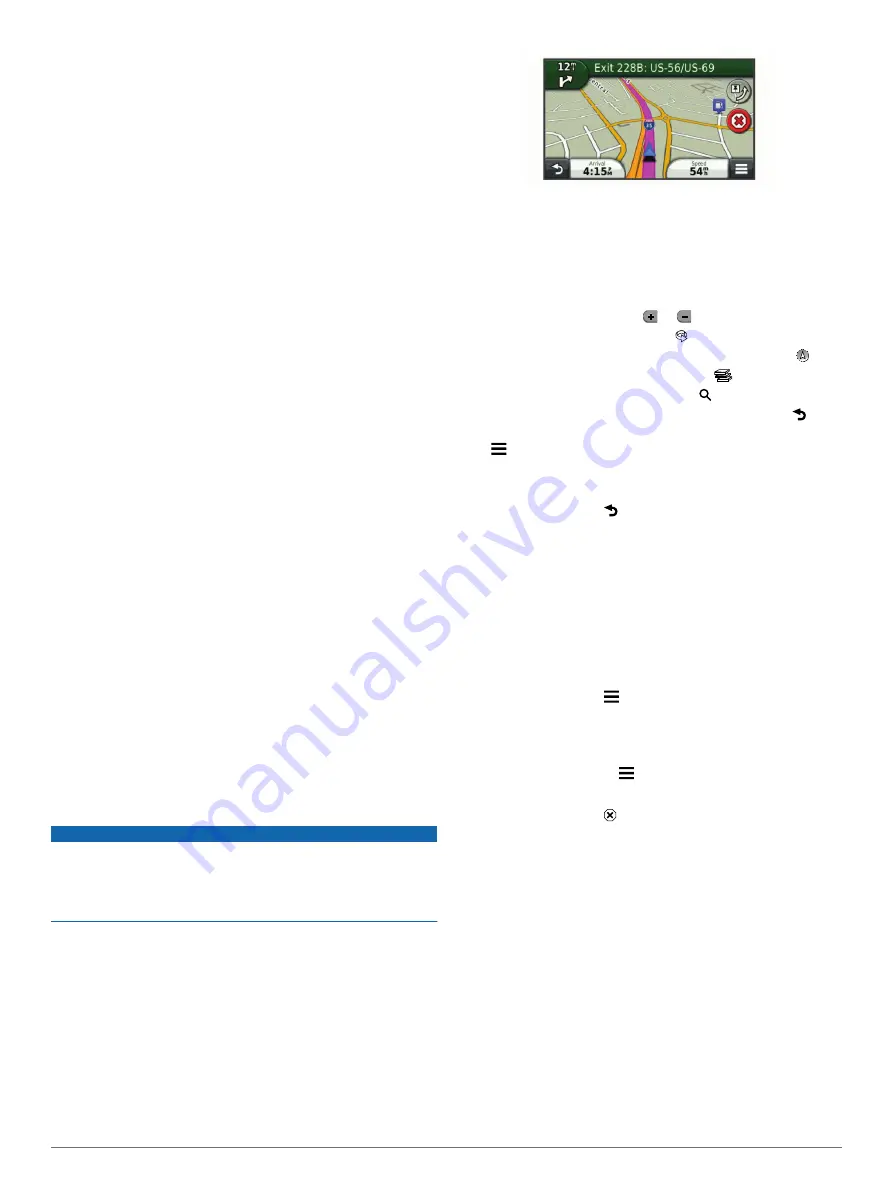
Navigation
Starting a Route
1
2
Select a location.
3
Select
Go!
.
Changing the Route Calculation Mode
1
Select
Settings
>
Navigation
>
Calculation Mode
.
2
Select an option:
• Select
Faster Time
to calculate routes that are faster to
drive but can be longer in distance.
• Select
Curvy Roads
to calculate routes that prefer curvy
roads.
• Select
Off Road
to calculate point-to-point routes (without
roads).
• Select
Shorter Distance
to calculate routes that are
shorter in distance but can take more time to drive.
Previewing Multiple Routes
1
Finding a Location by Category
2
From the search results, select a location.
3
Select
Routes
.
4
Select a route.
5
Select
Go!
.
Starting a Route to a Saved Location
1
Select
Where To?
>
Saved
.
2
If necessary, select a category, or select
All Saved Places
.
3
Select a location.
4
Select
Go!
.
Taking a Route Using Curvy Roads
Your device can calculate routes that prefer curvy roads. This
feature can provide a more enjoyable ride, but it may increase
the time or distance to your destination.
1
Select
Settings
>
Navigation
>
Calculation Mode
>
Curvy
Roads
>
Save
.
2
Select
Settings
>
Navigation
>
Avoidances
>
Highways
to
avoid highways on your route (optional).
This can increase the use of curvy roads in routes but may
add substantial time or distance for longer routes.
3
Start a route.
Your Route on the Map
NOTICE
The speed limit feature is for information only and does not
replace your responsibility to abide by all posted speed limit
signs and to use safe driving judgment at all times. Garmin will
not be responsible for any traffic fines or citations you receive for
failing to follow all applicable traffic laws and signs.
The route is marked with a magenta line. A checkered flag
marks your destination.
As you travel, the device guides you to the destination with voice
prompts, arrows on the map, and directions at the top of the
map. If you depart from the original route, the device
recalculates the route and provides new directions.
A data field displaying the current speed limit may appear as
you travel on major roadways.
Using the Navigation Map
1
From the main menu, select
View Map
.
2
If the zoom controls are hidden, select the map to display the
zoom controls.
3
Select the map.
4
Select an option:
• To zoom in or out, select or .
• To rotate the map view, select .
• To switch between North Up and 3-D views, select .
• To add or remove map layers, select
.
• To view specific categories, select .
• To center the map on your current location, select .
• To view shortcuts for map and navigation features, select
.
Adding a Point to a Route
Before you can add a point, you must be navigating a route.
1
From the map, select >
Where To?
.
2
Search for a location.
3
Select a location.
4
Select
Go!
.
5
Select
Add to Active Route
.
Skipping a Point in Your Route
If you decide not to go to the next point in your route, you can
skip the point. This prevents the device from attempting to route
you back to the missed point. This feature is not available if the
next point is your final destination.
From the map, select >
Skip
.
Taking a Detour
While navigating a route, you can use detours to avoid obstacles
ahead of you, such as construction zones.
While navigating, select >
Detour
.
Stopping the Route
From the map, select .
Using Suggested Routes
Before you can use this feature, you must save at least one
location and enable the travel history feature (
).
Using the myTrends
™
feature, your device predicts your
destination based on your travel history, the day of the week,
and the time of day. After you have driven to a saved location
several times, the location may appear in the navigation bar on
the map, along with the estimated time of travel, and traffic
information.
Select the navigation bar to view a suggested route to the
location.
About Exit Services
While you navigate a route, you can find gas, food, lodging, and
restrooms near upcoming exits.
Services are listed under tabs by category.
Navigation
5



